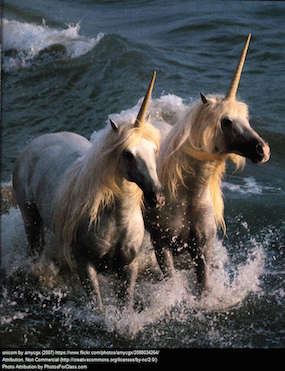1.1 Read About a Sense of Place
1.1A Descriptive Text
What is the goal of descriptive writing? Where is descriptive writing used?
Descriptive text creates a world for the reader to live in!

Descriptive text is used in many kinds of fiction and non-fiction writing to describe a person, place, or thing.
- A journalist uses descriptive text to take the reader into real world places or situations.
- A science blogger uses descriptions to help readers make sense of the world or topic being written about.
- A historical fiction writer uses description to help immerse readers in a time period in order to connect with and understand that place and time.
- An advertising agency wants you to visualize the product they are selling to entice you to buy it.
- A fantasy writer uses descriptive text so you can see the unicorns galloping in the water.
Imagery is an important literary device that creates a vivid description involving the senses. We interact with our world using our senses, so it's the best way to convey to a reader what we are describing.
Your five senses refers to:
| Sight | Hearing | Touch | Taste |
Smell |
Check out this video.
YOUR TASK: Imagine a school day without electricity or plumbing, where drinking water had to be brought from a neighbouring farm and the washroom was a hole in the ground in a shed across the schoolyard. Imagine sharing a classroom with students of all ages, with brothers, sisters and cousins, and being taught year after year by the same teacher. As recently as 60 years ago, this was the reality of the rural education system, which was so dependent upon the one room schoolhouse. What was it like? Descriptive text can help you to feel like you were there - to understand the sense of place that many older Canadians, especially from small towns, experienced.
 As you read "Inside Edam, Saskatchewan's One Room School", go to your Learning Guide and complete 1.1A: Experiencing Descriptive Text - Imagery.
As you read "Inside Edam, Saskatchewan's One Room School", go to your Learning Guide and complete 1.1A: Experiencing Descriptive Text - Imagery.